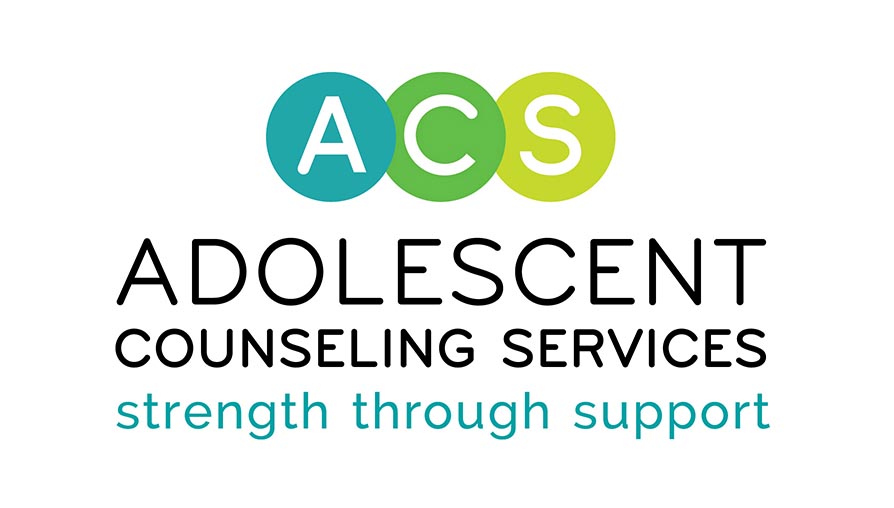
The Power of Co-Regulation: Supporting Your Child’s Emotional Growth
Written By: Mackenzie Pyke, Clinical Trainee at ACS, On-Campus Counseling Program
PARENTING CAN OFTENfeel like a balancing act, especially when your child or teenager is experiencing big emotions. Whether they’re frustrated, sad, or angry, navigating these emotional moments can be challenging for everyone involved. One of the most effective ways to support your child through these ups and downs is through co-regulation, a process where parents or caregivers help children manage their emotions in real-time. By offering calm, steady guidance, co-regulation sets the foundation for children to learn self-regulation, a skill that is essential for emotional well-being.
What is Co-Regulation?
Co-regulation refers to the supportive interactions between an adult and a child where the adult helps the child manage their emotional responses to situations. Unlike self-regulation, which is the ability to manage emotions independently, co-regulation involves a trusted adult guiding a child to calm down, understand their feelings, and learn how to handle stress.
Children and adolescents, especially, rely on adults for this type of support because their brains are still developing. One part of the brain involved in emotional regulation, the prefrontal cortex, isn’t fully mature until around the mid-20s. This means young people need guidance when managing intense emotions, and co-regulation provides that framework.
Co-Regulation for Different Ages
Co-regulation looks different depending on the age of the child. Both school-aged children and adolescents benefit from this support, but the way co-regulation is applied must be adapted to meet their developmental needs.
For School-Aged Children (Ages 5-12)
School-aged children are learning how to express their emotions and navigate more complex social interactions. They may become frustrated with friendships, schoolwork, or sibling dynamics, and their ability to manage these feelings is still developing. Co-regulation at this age involves teaching them how to process their emotions while also guiding them through specific situations.
What Co-Regulation Looks Like for School-Aged Children:
- Acknowledge Their Feelings: When your child is upset or overwhelmed, it’s important to validate their emotions. For example, saying, “It looks like you’re feeling really frustrated with your homework right now,” helps them understand that their emotions are seen and heard.
- Offer Simple Strategies: At this age, you can begin to introduce basic emotional regulation techniques. Encourage them to take deep breaths, use calming words, or count to ten when they feel upset.
- Provide Emotional Vocabulary: Help your child name their emotions. The more words they have to describe what they’re feeling (like “angry,” “disappointed,” or “worried”), the better equipped they are to manage those emotions.
- Create a Safe Space: School-aged children benefit from having a calm and supportive environment when they are overwhelmed. Offering physical closeness, like sitting beside them or holding their hand, can help ground them as they work through their feelings.
For Adolescents (Ages 13-18)
Adolescence is marked by intense emotional changes, driven in part by hormonal shifts and the increased desire for independence. Teens often experience heightened emotions, such as anxiety, stress, and frustration, which can be compounded by academic pressures, friendships, and identity exploration. Co-regulation with adolescents looks different than with younger children, as they require more autonomy and a different type of emotional support.
What Co-Regulation Looks Like for Adolescents:
- Be a Steady Presence: For teens, it’s important to give them space to express their emotions without judgment. While they may not want a hug or physical comfort in the same way as younger children, simply being present and available is a key form of co-regulation.
- Active Listening: Teens want to be heard. Practice active listening by making eye contact, nodding, and reflecting their feelings back to them without jumping into problem-solving mode. For example, say, “It sounds like you’re really stressed about that project,” instead of “You’ll be fine, just get it done.”
- Encourage Reflection: With adolescents, co-regulation often involves encouraging them to reflect on their emotions and choices. After the emotional moment has passed, help them think through what happened by asking open-ended questions like, “What do you think triggered that frustration?” or “How could we handle that differently next time?”
- Model Emotional Regulation: Adolescents are highly observant of their parents’ behavior. By managing your own emotions calmly and effectively, you model the skills they need to develop. When they see you pause, take a breath, and thoughtfully respond to a stressful situation, they learn to do the same.
The Long-Term Benefits of Co-Regulation
Co-regulation is not just a momentary intervention—it’s a long-term investment in your child’s emotional health. By consistently helping your child manage their emotions, you teach them how to handle life’s challenges in a healthy way. Co-regulation across childhood and adolescence builds the foundation for strong self-regulation skills, leading to better mental health outcomes in adulthood.
Additionally, co-regulation helps strengthen your relationship with your child or teen. When children feel emotionally supported by their parents, they are more likely to trust you, seek your guidance, and feel secure in their connection with you.
How to Get Started with Co-Regulation
The key to co-regulation is to remain calm, patient, and consistent. Whether you’re dealing with a frustrated school-aged child or an overwhelmed teen, these steps can help you engage in co-regulation effectively:
- Stay Calm: Before you can help your child manage their emotions, you must regulate your own. Take a moment to breathe deeply and center yourself before responding.
- Acknowledge and Validate: Whether they are six or sixteen, children need to feel that their emotions are understood. Let them know that it’s okay to feel the way they do.
- Be Patient: Co-regulation is a skill that takes time to develop. Your child may need repeated guidance and support before they can manage emotions independently.
- Model Healthy Regulation: Your emotional reactions teach your child how to respond to stress. Show them healthy ways to cope by modeling calm behavior in challenging situations.
Building Emotional Resilience
Co-regulation is a crucial part of helping children and adolescents develop the emotional skills they need to thrive. Whether you’re offering a calming hand to a school-aged child or listening patiently to an overwhelmed teen, your steady guidance helps them learn how to navigate life’s challenges. Over time, they will develop the ability to regulate their emotions independently, setting them on a path toward emotional resilience and well-being.
By practicing co-regulation, you’re not just supporting your child’s emotions in the moment—you’re helping them build a foundation of emotional strength that will last a lifetime.
_________________________
References
Hamoudi, A., Murray, D.W., Sorensen, L., & Fontaine, A. (2017). Self-regulation and toxic stress report 2: A review of ecological, biological, and developmental studies of self-regulation and stress (OPRE Brief #2015-30). U.S. Department of Health and Human Services, Administration for Children and Families, 1-67. https://www.acf.hhs.gov/sites/default/files/documents/acf_report_2_rev_022415_final_508_0.pdf
Jeung, J., Hessler Jones, D., Frame, L., Gilgoff, R., Long, D., Thaur, N., Koita, K., Bucci, M., & Burke Harris, N. (2022). A caregiver-child intervention for mitigating toxic stress (“the resilience clinic”): A pilot study. Maternal and Child Health Journal, 26, 1959-1966. https://doi.org/10.1007/s10995-022-03485-4
Lobo, F. M., & Lunkenheimer, E. (2020). Understanding the parent-child coregulation patterns shaping child self-regulation. Developmental Psychology, 56(6), 1121–1134. https://doi.org/10.1037/dev0000926
Rosanbalm, K.D., & Murray, D.W. (2017). Caregiver co-regulation across development: A practice brief. (OPRE Brief #2017-80). U.S. Department of Health and Human Services, Administration for Children and Families, 1-10. https://fpg.unc.edu/sites/fpg.unc.edu/files/resources/reports-and-policy-briefs/Co-RegulationFromBirthThroughYoungAdulthood.pdf
